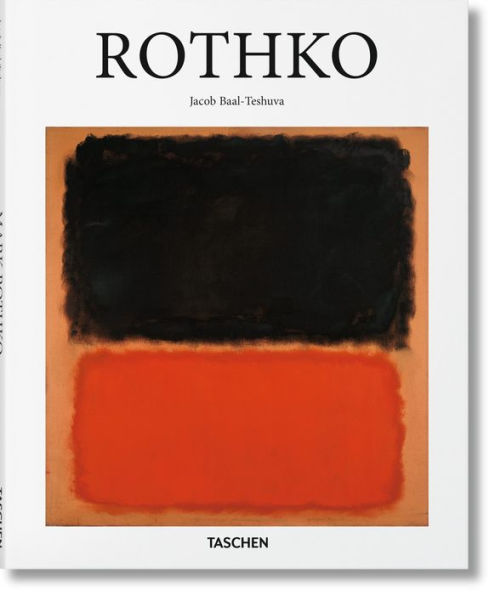Pictures as Drama: Tragedy, ecstasy, and doom
Resisting interpretation or classification, Mark Rothko (1903–1970) was a prominent advocate for the artist's consummate freedom of expression. Although identified as a key protagonist of the Abstract Expressionist movement, first formed in New York City, Rothko rejected the label and insisted instead on " a consummated experience between picture and onlooker."
Following a repertoire of figurative works, Rothko developed his now iconic canvases of bold color blocks in red, yellow, ochre, maroon, black, green. With these shimmering, pulsating color masses, Rothko stressed that he had not removed the human figure but rather put symbols or shapes in its place. These intense color forms contained all the tragedy of the human condition. At the same time, Rothko explicitly empowered the viewer in the expressive potential of his work. He believed " A picture lives by companionship, expanding and quickening in the eyes of the sensitive observer."
From his early development through to his most famous color fields, this book introduces the intellect and influence of Rothko's dramatic, intimate, and revolutionary work.
About the Series:
Each book in TASCHEN’s Basic Art series features:
- a detailed chronological summary of the life and oeuvre of the artist, covering his or her cultural and historical importance
- a concise biography
- approximately 100 illustrations with explanatory captions
Pictures as Drama: Tragedy, ecstasy, and doom
Resisting interpretation or classification, Mark Rothko (1903–1970) was a prominent advocate for the artist's consummate freedom of expression. Although identified as a key protagonist of the Abstract Expressionist movement, first formed in New York City, Rothko rejected the label and insisted instead on " a consummated experience between picture and onlooker."
Following a repertoire of figurative works, Rothko developed his now iconic canvases of bold color blocks in red, yellow, ochre, maroon, black, green. With these shimmering, pulsating color masses, Rothko stressed that he had not removed the human figure but rather put symbols or shapes in its place. These intense color forms contained all the tragedy of the human condition. At the same time, Rothko explicitly empowered the viewer in the expressive potential of his work. He believed " A picture lives by companionship, expanding and quickening in the eyes of the sensitive observer."
From his early development through to his most famous color fields, this book introduces the intellect and influence of Rothko's dramatic, intimate, and revolutionary work.
About the Series:
Each book in TASCHEN’s Basic Art series features:
- a detailed chronological summary of the life and oeuvre of the artist, covering his or her cultural and historical importance
- a concise biography
- approximately 100 illustrations with explanatory captions

Product Details
| ISBN-13: | 9783836504263 |
|---|---|
| Publisher: | TASCHEN |
| Publication date: | 08/03/2015 |
| Edition description: | Reissue |
| Pages: | 96 |
| Product dimensions: | 8.50(w) x 10.30(h) x 0.50(d) |
About the Author
Customer Reviews
Explore More Items
While anchoring his practice in the traditions of antiquity and the Renaissance, Auguste Rodin (1840–1917) paved the way for modern sculpture.
This book explores how Georgia O’Keeffe lived her life steeped in modernism, bringing the same style she developed in her
In addition to his many remarkable paintings and drawings,
Picasso and Truth offers a breathtaking and original new look at the most significant artist of the modern era.

